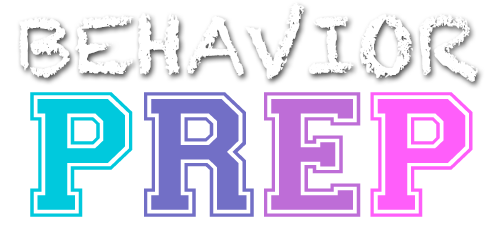B.21 Identify examples of processes that promote emergent relations and generative performance.
In applied behavior analysis (ABA), derived stimulus relations refer to establishing functional relationships between stimuli through direct training with some stimuli and the emergence of new relations without explicit training. Derived stimulus relations are based on the principles of stimulus equivalence, which involve the emergence of untrained stimulus-stimulus relationships. Here are the definitions and examples of derived stimulus relations:
Derived Stimulus Relations
Derived stimulus relations occur when an individual demonstrates the ability to respond to stimuli in a way that goes beyond direct training. It involves the emergence of new relations among stimuli without explicit instruction or reinforcement for those specific relations. Derived stimulus relations are typically seen in the context of stimulus equivalence, where stimuli that share certain properties come to evoke the same response.
Reflexivity
Example: Reflexivity – If a person is taught to match a picture of a “cat” to a picture of a cat (A) to the same picture of the “cat” (A). The person is taught that A=A. This is also called match to sample.
Symmetry
Example: Symmetry – If a person is taught to match the spoken word “cat” to a picture of a cat (A to B), derived stimulus relations may emerge. Without explicit training, the person may also be able to match the picture of a cat to the spoken word “cat” (B to A), demonstrating symmetry.
Transitivity
Example: Transitivity – If a person is taught to match a picture of a dog (A) to the spoken word “dog,” and a picture of a dog (B) to a picture of a bone (C), the person may demonstrate transitivity by matching the spoken word “dog” to the picture of a bone (A to C) without direct training.
Equivalence
Example: Equivalence – If a person is taught to match the spoken word “car” to a picture of a car (A to B), a picture of a car (B) to the written word “car” (C), and the written word “car” (C) to the spoken word “car,” the person may demonstrate equivalence by correctly selecting the picture of a car (B) when presented with the written word “car” (C) or the spoken word “car.”
Derived stimulus relations illustrate the concept of relational responding, and the emergence of new relations based on previously established ones. Understanding derived stimulus relations is important in teaching complex skills and promoting the generalization of learning across different stimuli and contexts in ABA programs.
Emergent Relations and Generative Performance
Emergent relations refer to the development of untrained responses based on previously learned relations, while generative performance involves applying learned behaviors or knowledge to new and novel situations. These processes are often promoted through specific instructional techniques such as stimulus equivalence, relational frame theory, and derived relational responding.
Example: A student is taught that a particular shape is called a “triangle” and that a triangle has three sides. Later, when presented with a new, unfamiliar triangle, the student correctly identifies it as a triangle without additional training. This demonstrates an emergent relation, where the student applies the concept of “triangle” to a novel shape. Generative performance is shown when the student uses the concept of “three sides” to identify other triangles in different contexts, indicating that the learning has generalized beyond the original training.
.”
